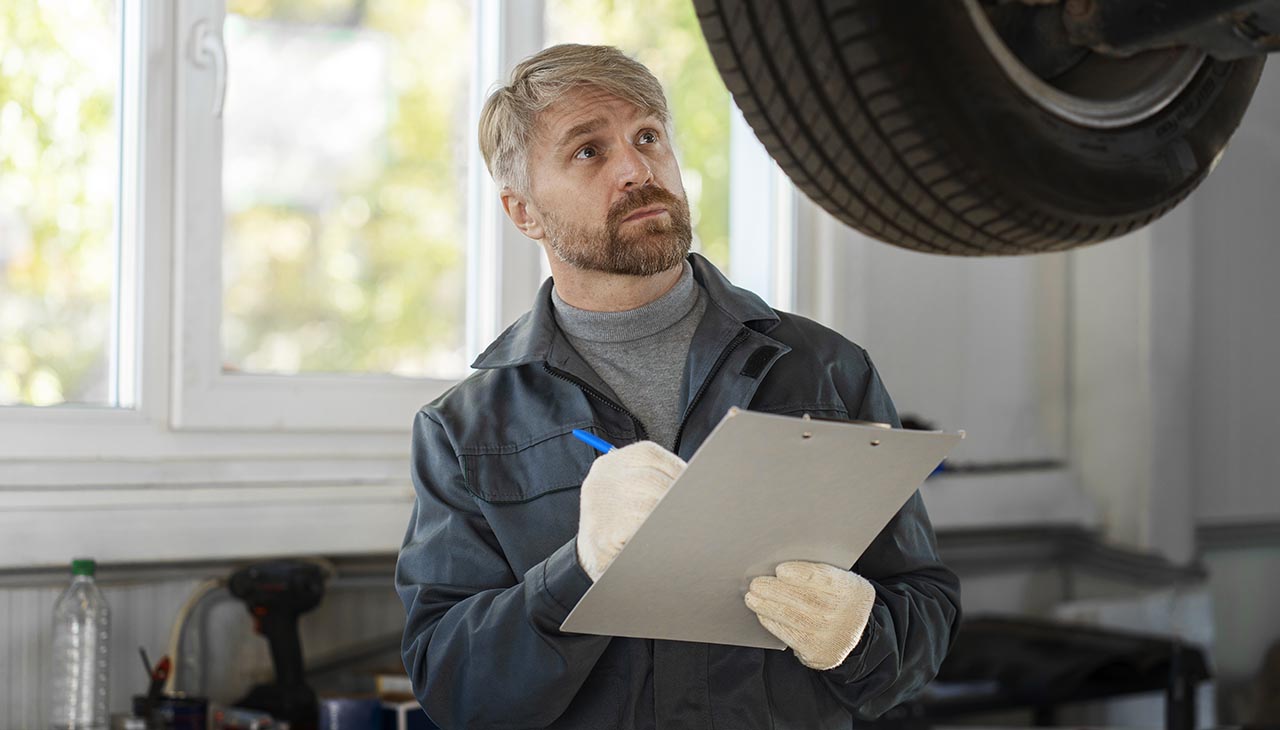Preventive Maintenance Checklist for Your Car
4 min read
Maintaining your car in top condition is essential for ensuring its longevity, safety, and reliability. A well-maintained vehicle not only runs more efficiently but also saves you money in the long run by preventing costly repairs. This preventive maintenance checklist is designed to guide you through the basic but crucial checks and services your car needs regularly. By following this guide, you can keep your vehicle performing at its best and ensure a safer, smoother driving experience.
Oil and Coolant Levels
Regularly checking and maintaining optimal levels of engine oil and coolant is critical to prevent overheating and engine damage, which are among the leading causes of vehicle breakdowns. Engine oil lubricates engine parts, reducing friction and wear, while coolant absorbs heat from the engine and dissipates it through the radiator. Ensure you check these fluids when the engine is cool, typically before you start the car for the first time in the day. If you’re unsure of how to do this, consult your vehicle’s owner’s manual for detailed instructions. Keeping these fluids at their recommended levels can significantly extend the life of your engine.
Air Filter
A clean air filter is vital for maintaining the performance and fuel efficiency of your car. It ensures that clean air flows into the engine, preventing dirt, dust, and debris from causing damage. A clogged air filter can lead to decreased acceleration, reduced engine power, and increased fuel consumption. For most vehicles, it is recommended to replace the air filter every 12,000 to 15,000 miles, but you should consult your vehicle’s owner’s manual for the specific recommendations for your car. Regular inspection and replacement of the air filter can significantly contribute to the overall efficiency and longevity of your vehicle.
Tire Pressure and Tread Depth
Maintaining correct tire pressure is crucial not only for ensuring your safety but also for optimizing your car’s fuel efficiency. Under-inflated or over-inflated tires can lead to uneven tire wear, reduced traction, and in severe cases, tire failure. It’s advised to check your tire pressure at least once a month using a reliable tire pressure gauge. Remember, tire pressure should be checked when the tires are cold, as driving heats up the tires, expanding the air inside and increasing the pressure. Additionally, regularly checking the tread depth of your tires is paramount. The tread helps to disperse water underneath the tire, improving grip and preventing hydroplaning on wet roads. A simple way to check tread depth is the penny test; insert a penny into the tread with Lincoln’s head down. If you can see all of Lincoln’s head, it’s time to replace the tire. Keeping an eye on both tire pressure and tread depth will contribute significantly to your vehicle’s performance and your safety on the road.
Lights
Ensuring that all of your vehicle’s lights are functioning correctly is crucial for visibility and safety on the road. This includes headlights, turn signals, brake lights, and parking lights. Properly functioning lights improve your vehicle’s visibility, enabling other drivers to see you clearly and react appropriately, especially during nighttime or adverse weather conditions. Regularly inspect your lights to ensure they are bright and operating as expected. If you notice any dimming or one of the lights is not working, replace the bulbs promptly. It’s also advisable to clean the light covers to prevent dirt and grime from reducing their effectiveness. Regular checks and maintenance of your vehicle’s lighting system can significantly enhance your safety and the safety of others on the road.
Oil & Filter
Changing the oil and oil filter at intervals recommended by your vehicle’s manufacturer is crucial for protecting the engine from wear and tear. Fresh oil ensures proper lubrication, cooling, and cleaning of engine components, whereas a new oil filter is vital for trapping debris and contaminants that could harm the engine. Neglecting to replace the oil and filter could lead to increased engine wear, reduced efficiency, and ultimately, engine failure. Typically, it’s advised to change the oil every 3,000 to 5,000 miles, but you should refer to your vehicle’s owner’s manual for specific recommendations. Consistently following the manufacturer’s guidelines for oil and filter changes is one of the most straightforward yet essential practices to extend the life of your car’s engine.
Rotate Tires
Rotating your tires is an important maintenance task that should not be overlooked. Regular rotation helps to evenly distribute tire wear, ensuring that all tires wear down uniformly. This not only extends the lifespan of your tires but also helps maintain balanced handling and traction, which can enhance overall driving safety. Most manufacturers recommend rotating tires every 6,000 to 8,000 miles, but you should check your vehicle’s owner’s manual for specific guidance. Ignoring tire rotation can lead to premature tire wear, requiring them to be replaced sooner and potentially leading to uneven driving performance.
Wax Vehicle
Applying wax to your car’s exterior not only keeps it looking glossy and new but also provides protection against various environmental hazards such as UV rays, rain, dirt, and road salt that can cause the paint to fade and corrode over time. Typically, it’s recommended to wax your vehicle every three to six months, depending on the type of wax you use and the conditions your car is exposed to. A good wax can add a protective layer that makes your car easier to clean, while also helping to prevent scratches and chips in the paint. Whether you choose to do it yourself or have it done professionally, regular waxing is a crucial step in maintaining your vehicle’s appearance and preserving its value.



